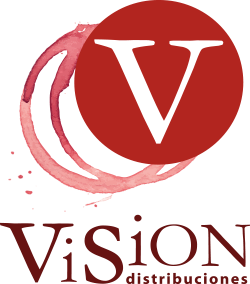Nonmanufacturing costs incurred during a period are treated as \ \qquad \assetsproduct costsperiod

Since nonmanufacturing overhead costs are treated as period costs, they are not allocated to goods produced, as would be the case with factory overhead costs. Since they are not allocated to goods produced, these costs never appear in the cost of inventory on a firm’s balance sheet. In the realm of accounting and finance, period costs play a pivotal role in shaping the strategic decisions of a business. Unlike product costs, which are directly tied to the production of goods, period costs are not directly linked to the production process and are expensed in the period they are incurred. These costs, such as general, selling, and administrative expenses, are often fixed and are incurred regardless of the company’s level of production or sales.
The Temporal Dimension of Period Costs
- Since nonmanufacturing overhead costs are treated as period costs, they are not allocated to goods produced, as would be the case with factory overhead costs.
- On the other hand, a product with a low gross profit may actually be very profitable, if it uses only a minimal amount of administrative and selling expense.
- From an operations manager’s viewpoint, period costs are about efficiency and process improvement.
- Direct labor refers to salaries and wages of employees who work to convert the raw materials to finished goods.
- Examples include cash, investments, accounts receivable, inventory, supplies, land, buildings, equipment, and vehicles.
- Which of the following is an appropriate setting for job order production?
Period costs are operating expenses that a company incurs that are not directly tied to a specific product’s production or sale. These costs are typically expensed in the period they occur https://www.bookstime.com/articles/salaries-and-wages rather than being tied to inventory. Examples can include office rent, advertising expenses, or the salaries of non-production employees.

Can you give examples of product and period costs?

To obtain these details, you can refer to the company’s employment records that has a list of all the employees and their hourly rates. For instance, let’s say a company has an existing inventory worth $1,500. Led by editor-in-chief, Kimberly Zhang, our editorial staff works hard to make each piece of content is to the highest standards. Our rigorous editorial process includes editing for accuracy, recency, and clarity. If the net realizable value of the inventory is less than the actual cost of the inventory, it is often necessary to reduce the inventory amount.

Examples of Nonmanufacturing Overhead Costs
In short, things are simple if they are kept simple for example under financial accounting the distinction between these two is easy thanks to accounting standards. It is important to note that personnel outside production activity e.g. administration or sales staff are accounted for neither as direct labour nor manufacturing overheads. Companies under pressure to meet quarterly earnings targets might intentionally misclassify period costs https://webgodzilla.com/2023/05/16/how-to-accept-stock-donations-easy-steps-for/ as product costs, inflating profits. For instance, if the manufacturing costs are too high, these costs can create a dent in the company’s profit.
The Impact of Time on Cost Allocation
One of the foundational distinctions in managerial accounting is the separation of product costs and period costs. Understanding this distinction is crucial not only for accurate financial reporting but also for cost control, pricing strategies, budgeting, and performance measurement. Which of the following statements most accurately describes financial accounting’s view of period costs?
The next nonmanufacturing costs incurred during a period are treated as step is to calculate the costs of utilities (electricity, water, or gas) that are directly used in the manufacturing process (for example, fuel used to operate the production equipment). “Managerial Accounting” by Ray H. Garrison, Eric W. Noreen, and Peter C. Brewer. Focused on internal management needs, this book discusses various aspects of managerial accounting, including detailed sections on cost classification and its implications for business decision-making.
- It means 70% of the product costs are recognized as expenses now, with the rest carried over in ending inventory.
- The intangibility means that service firms must account for their costs without the traditional classification of product costs.
- This is where a manufacturing time tracking app, such as Clockify, comes in handy.
- From the perspective of a CFO, managing period costs is about striking a balance between necessary expenditures and cost-saving measures.
- Nonmanufacturing overhead costs are the company’s selling, general and administrative (SG&A) expenses plus the company’s interest expense.
Benefit #3: Assess the profitability of a product

These are generally selling, general, and administrative expenses (SG&A). Optimize your workforce, take control of inefficiencies, and watch your profits soar with team time tracking software. The consulting firm was also able to re-negotiate the manufacturing company’s contracts with poor-performing suppliers. Which of the following is an appropriate setting for job order production? Since they don’t become part of the cost of goods sold, their immediate impact on profit can be assessed. For the past 52 years, Harold Averkamp (CPA, MBA) hasworked as an accounting supervisor, manager, consultant, university instructor, and innovator in teaching accounting online.
